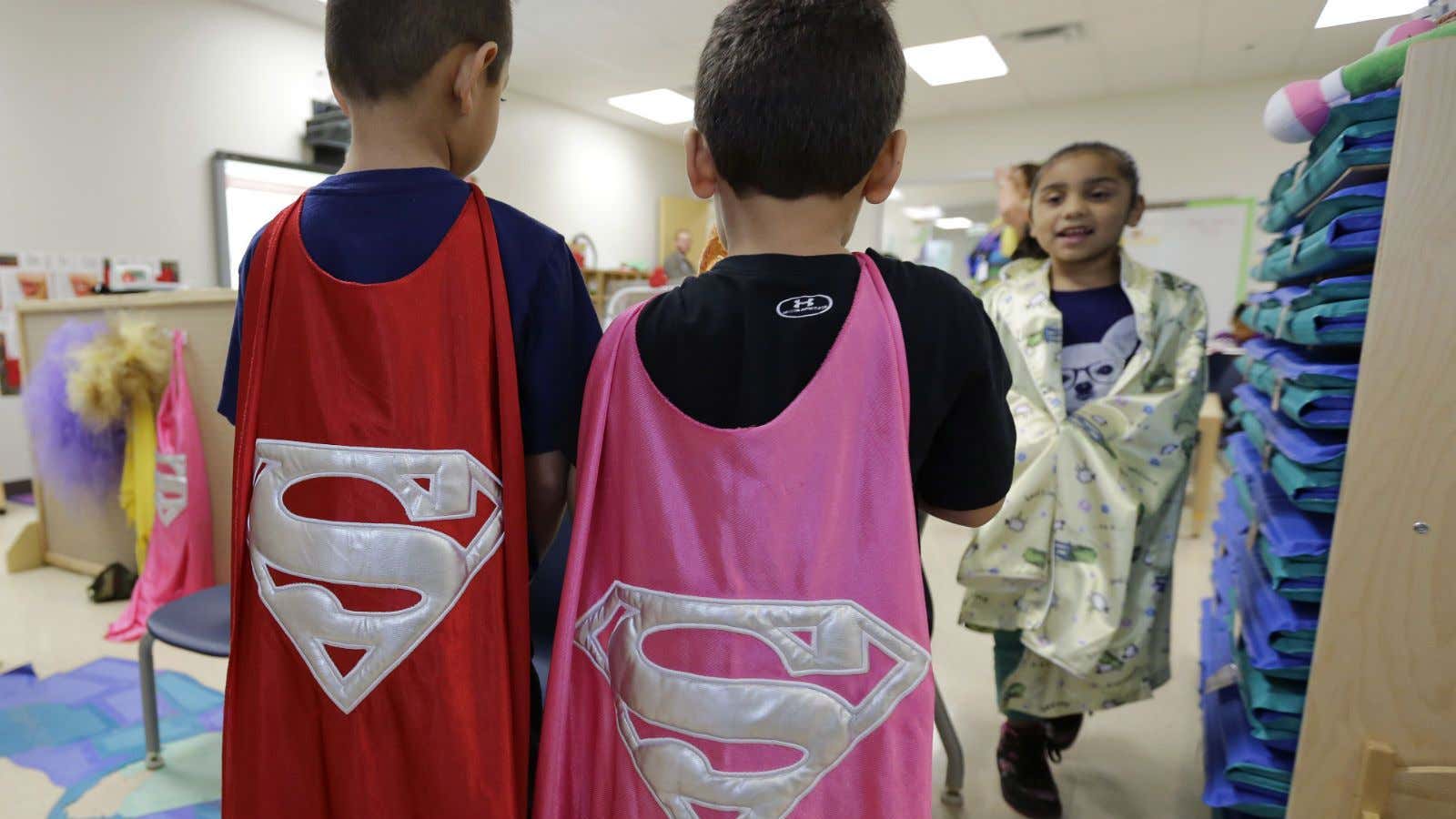The history of school reform is littered with short-lived, failed experiments. Will expanded preschool be an exception? US Secretary of Education Arne Duncan has touted high-quality preschool as “a sure path to the middle class”; President Obama has championed universal access to it; and New York City mayor Bill de Blasio is making preschool a reality for thousands of public school students—the vast majority of whom come from low-income families.
This is undoubtedly cause for celebration: Evidence shows that a high-quality preschool experience can dramatically enhance low-income children’s school readiness and eventual life outcomes.
But is access to quality preschool really a “sure path to the middle class”? Not by itself.
The reality is that there is no guarantee low-income children will succeed academically simply because they have a good preschool experience. To fully reap the benefits of early childhood education, these students need continued support outside the classroom through strong summer programs and after-school care.
My colleagues Doris Entwisle, Linda Olson and I learned these lessons by tracking the lives of nearly 800 Baltimore children—white and African American, low-income and middle class—for 25 years for our book, The Long Shadow. We began following these children as they entered the first grade in 20 public elementary schools in the fall of 1982 and followed their progress until the age of 28. Though these children grew up in Baltimore during its downward spiral of deindustrialization, what we observed in many respects parallels national trends.
Children in low-income families began first grade already behind academically: In reading comprehension, a key building block for all later learning, they were a half-grade level behind children from a more advantaged background. And later, during elementary school, that half-grade gap exploded to three full years. At that point, a low-income child transitioning into middle school might be reading at a third or fourth grade level, while a child from an advantaged background could be reading at a sixth grade level. That is a huge gap, one not easily closed.
As a result, low-income children were held back far more often, and were more often assigned to remedial and low-level courses in middle school and high school. And, having struggled all along, the majority—60%—left school at the first opportunity. As young adults, many struggled. They were in and out of the workforce and, when employed, most were in low wage jobs. Many also ran afoul of the law.
Looking back at those 25 years as a whole, other startling facts emerged.
First, disadvantaged students fell most behind during the summer. During the school year, they generally kept pace with children of more advantaged background in making progress. But having entered first grade already behind and then falling back even further during the long summer break, their achievement gap against those more advantaged increased every year.
The reason much of the achievement gap can be traced to the summer months is simple: That’s when low-income children’s learning depends on the resources and experiences available to them outside the classroom—at home and in their neighborhoods. We refer to this phenomenon as “summer slide” or “summer setback,” and much the same pattern is evident in national studies on the topic. The bottom line is that while a strong preschool experience can help mitigate the achievement gap when children enter the first grade, it won’t address their continuing summer slide.
Second, even during the school year, a strong preschool education won’t erase the forces of poverty that many children confront daily in their homes and neighborhoods. Family poverty, concentrated poverty at the neighborhood level, and attendance at a high-poverty school—each is a well-established risk factor for academic struggle and too many needy children are burdened by all three.
Let’s be honest: for children from low-income families, there is no certain ticket into the middle class. There are myriad advantages that children from middle class and wealthy families experience in school and later in life. But that is not to say we cannot do anything. In fact, we know a great deal about how to help low-income children get off to a stronger start academically, and help them keep up later.
New York in particular has taken action on this front. This June, the de Blasio administration doubled the number of slots for middle school students in summer enrichment programs, which included activities in literacy, math, science and sports. This September, the city will expand after-school programming for middle school students by 142%, reaching 85% of its middle schools.
Furthermore, existing programs like BELL (Building Educated Leaders for Life), the REAL Kids (Reading and Enrichment Academy for Learning), and the Trailblazers offer strong examples of what works. At the BELL summer program, children in kindergarten through sixth grade get to devote the morning to academics (two hours on literacy, one on math) and afternoon to enrichment (e.g., sports, robotics, journalism and museum/performing arts field trips). More expansion of such outside-the-classroom investments for both preschool-aged children and early elementary grades is essential to giving low-income children a genuine shot at the middle class.
Too often, we attack education problems piecemeal, thinking of preschool, after school and summer programming as separate elements. But they are complements, not substitutes. So while universal access to preschool is essential, we must remember there is no silver bullet. We need an integrated strategy; one and done will not do.




